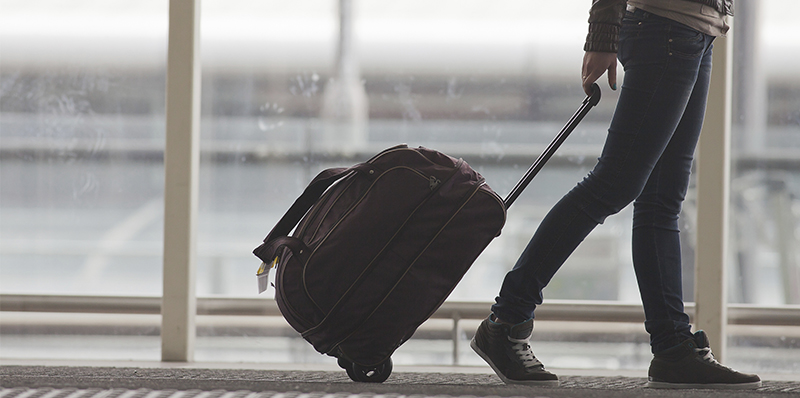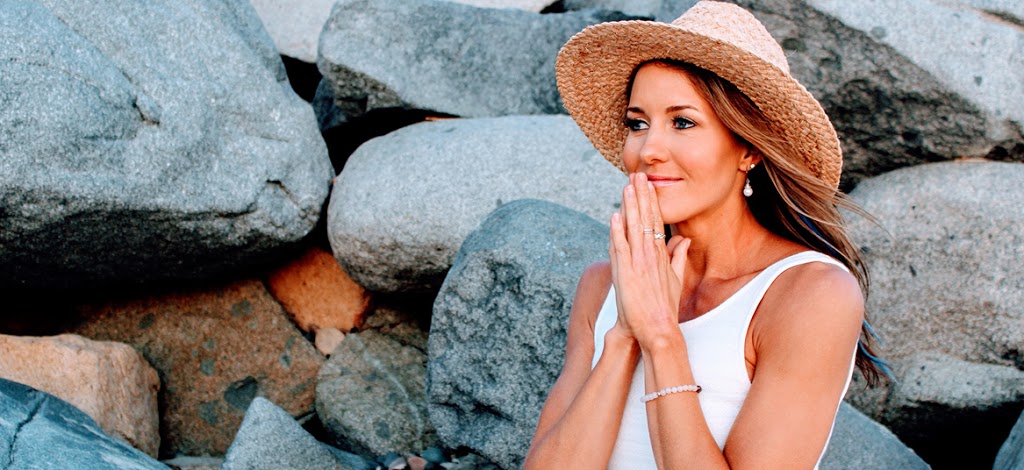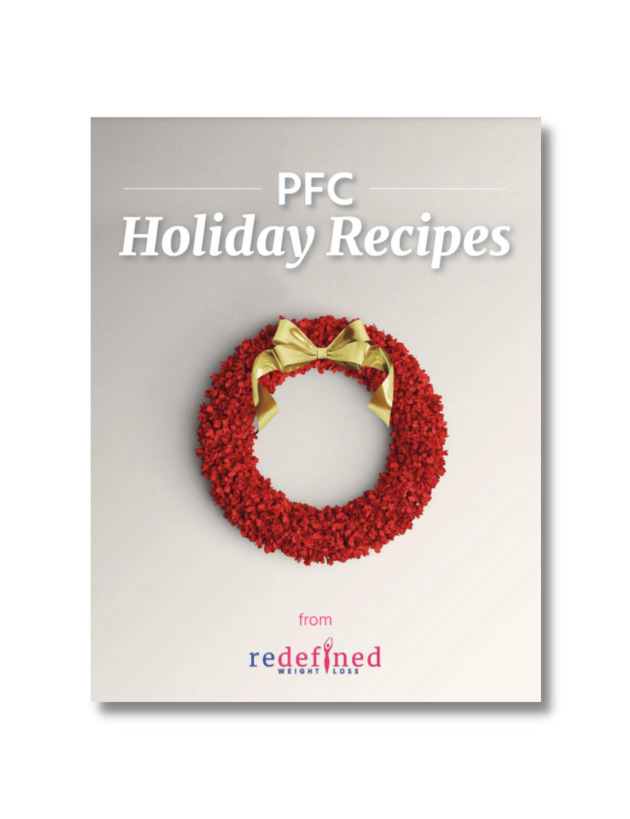As many of you know, I travel a lot. Lately my speaking engagements are in high demand, and I can’t complain! I want to share with you how I find balance and how I’m able to lead my crazy-busy, constantly-working lifestyle without going insane. I have certain strategies I implement when I’m leaving home because even when I travel I follow my own PFC guidelines.
“How am I supposed to eat while traveling?” is a common question we get from you. “How do I eat PFC when I’m not at home?” “What kinds of foods do I take with me to the airport, and keep at the hotel?”
My two keys to success for eating PFC while traveling are planning ahead and packing snacks. Let’s take a look at what I bring with me from each category of PFC. Side note: I only pack a carry on when I travel and I’ve never had a problem getting any of these items through security! 🙂
P: Protein can be tricky. Many protein sources require refrigeration, so when I fly I like to bring packets of salmon (or white albacore packed in water or olive oil) and I rely on dried beef and chicken strips. Each stick is an ounce which is the perfect protein portion for a snack, and if it’s meal-time, I can have two of these with my fat and carb sources and call it balanced. Trader Joe’s has a wild salmon jerky that I also like to get when I want to switch it up (it’s on the spendy side though).
F: Fats are pretty portable for the most part. I stock up on nuts, seeds, and I might toss an avocado or two into my bag (do not slice them up ahead of time—you can bring disposable silverware for slicing or find some at the airport). Nuts and seeds are great because they don’t take up much space, and you only need a couple tablespoons for a serving. If you don’t have an allergy, peanut butter and almond butter are also convenient fat sources, and my little secret is that these contain a little bit of plant protein, so if you’re snacking and realizing you’re lacking a protein source, I’d choose nut butter over heavy cream or an avocado. (I don’t normally count plant protein sources as my P because animal protein sources support metabolism most — this is a little insider’s secret in case you’re in a bind.) Justin’s almond and peanut butter packets are great for travel because they’re packaged in individual serving sizes. Canned olives also work for a readily available fat; I put them in a tiny travel container. I like coconut oil and olive oil too, and find that it travels well in little shampoo and conditioner containers. Coconut oil is my favorite to travel with because it’s so versatile — not only can I scoop or pour out a couple tablespoons and count it as my healthy fat, but I can use it as a hair moisturizer, face cream, makeup remover and lotion, too!
C: Carbs are an easy one! Many fresh fruits like bananas, apples and oranges, come pre-packaged in their own portable container and grapes and berries travel okay too, as long as you don’t squish ‘em :). My first choice would definitely be to stick with the fresh stuff, but if you just don’t have space for it, dried fruit is a good option as it doesn’t take up as much room or require as much care to prevent bruising. A serving size ends up being about a quarter cup, which can be easily squeezed into your carry-on next to your socks! I look for unsweetened varieties like Whole Foods’ or Trader Joe’s dried mango slices.
And if you crave sugar, click on the pink button below to get my free guide to preventing and busting sugar cravings.
Get my Sugar Craving FREE Guide!
Let the fun begin!
Play the mix and match game: Pick one from each of the 3 categories and you’re set!
Something I like to do ahead of time is make my own trail mix by combining whatever nuts and seeds I have on hand with some dried fruit and my Enjoy Life chocolate chips. I might pre-slice an apple and put it in a container with protein nut butter (almond or peanut butter with a scoop of our Pure Primal Protein powder mixed in) for a PFC balanced snack. Also good to know is that most cooked foods will be good for a few hours without spoiling, so you can always take snacks that you’d typically refrigerate with you to the airport (dinner leftovers, guacamole, lunch meat with cream cheese spread rolled up in lettuce or make a mini smoothie (you’ll have to drink this before going through security, though!).
Bonus tip: While I don’t typically recommend bars, Lara Bars are one of my favorite traveling companions—a portable and easy way to get fat and carbs in!
A few more tips before you jet off:
Airports: When I’m at airports or have the ability to stop at a grocery or convenience store, I see what I can find there for variety so I can keep my packed non-perishable snacks for when I don’t have other options. I might get pre-boiled eggs for protein, cheese or pre-made guacamole or an avocado for fat and a piece of fresh fruit or pre-cut veggies for carbs.
Restaurants: One of my favorite parts about traveling is dining at local restaurants. I spend a lot of time checking out restaurant menus ahead of time and even making a few phone calls when I’m going somewhere new. Customer service over the phone can tell you a lot about a restaurant before even stepping foot in the door. I call coffee shops frequently too, because if they don’t carry almond milk, coconut milk, butter or heavy cream, then I know to either visit a different spot or bring my own (when I’m traveling sometimes I’ll put coconut oil in my coffee — it works similar to butter and is less perishable). Refer to restaurant eating for more tips on how I manage to eat the PFC way at any restaurant.
Farmers Markets: When it’s an option, I like to hit up local farmers markets, not only because they’re fun but also to get some fresh local produce and support the mission of local farmers.
Hotels: When I have a hotel with a mini fridge, I can stock up on healthy foods that require refrigeration that I’d normally buy at home. If I don’t, I might make a stop or two during my trip and stock up on the same non-perishable snacks I packed for the flight, as outlined above.
Supplements: This tip for traveling may be last but is certainly not least: Don’t forget your supplements! They are important for everyday living, and they are especially important when traveling. Traveling puts stress on your body and can definitely mess with your bowels (for many reasons— one being because you’re eating different foods than usual). I always take MyoCalm PM at the airport to relax my body for the flight (anyone else get tense on the plane?). At minimum I recommend bringing your gut health supps which include your probiotic (we generally recommend storing these in the refrigerator—the nice thing is that ours are safe for travel, as long as they don’t reach 172 degrees F for 72 hours consecutively), L-glutamine (I tend to travel with the caps because they’re more convenient and they look less sketchy than the powder but the powder still makes it through airport security so no worries if that’s all you’ve got!), and fish oil. Vitamin D and a multivitamin are also good travel companions. You’re already more prone to stress when traveling and if you’re used to taking your D on a regular basis and stop it can negatively affect your mood and increase your stress levels. While I don’t always recommend a multi, I think this becomes important when traveling because none of us eat perfectly, especially when we’re away from home or on vacation, so it helps fill in any nutrient gaps that might be missing. Our body doesn’t work as well as it can when it doesn’t receive the nutrients it needs.
Bonus tip: Booze: I’ve always got you covered on all spectrums, so here’s my alcohol tip in order to save you a couple bucks: You can bring up to five one-ounce bottles of alcohol through security! Get your complimentary soda water with lime in flight and add your favorite spirit. (Just be sure to ask the attendant to add it to your drink for you, since it’s legal to being the spirit on the plane, but not technically legal to self-serve!) For tips on which drinks are the best for keeping your blood sugars balanced, check out my detailed post: What About Alcohol? and the top three best and worse alcohol drinks in this TV segment. All of this said, the purpose of this post is to teach you how to travel the PFC way, and the PFC lifestyle does not need to include alcohol (and you may be better off without it!). However, since this is such a frequent question and because I like a drink every now and then, too, I wanted to include this tip in here.
Last but not least, if you get cravings for alcohol, carbs or sugar—traveling or not—you’ll want to click the pink button and grab my free guide for preventing and BUSTING sugar cravings!
Get my Sugar Craving FREE Guide!











